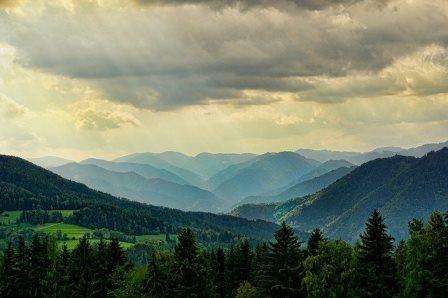Q- What kind of soil are needed for natural vegetation class 9?
Answer- There are various soils that are needed for natural vegetation in different areas. The sandy soil of the Thar Desert of Rajasthan is needed for Thorny bushes as well as cactus plants while wet, marshy deltaic regions support mangroves and deltaic vegetation, and slopes with soil depth soil have conical trees.
The above answer is about what kind of soil are needed for natural vegetation class 9. So, if you are a student of 9th standard so this question is going to be very helpful for you. In the above answer, we told you the answer of what kind of soil are needed for natural vegetation class 9. We hope that that answer will be very helpful for you. In case you want to share any doubt or queries with us so tell us through comments. We will try our best to reply to all of the comments.
Now, we are going to tell you about Natural Vegetation, and the term natural vegetation will help you to understand and learn the above answer of what kind of soil are needed for natural vegetation class 9? So, if you want to learn more about Natural Vegetation then you can continue reading the content given below. Before starting with ‘Natural Vegetation’. We would like to give you some important questions for class 9th students.
- How did the socialist party work in the monarchy
- State any three measures taken by the provisional government to suppress the Bolshevik influence
- One of the following characterizes the cold-weather season
Natural Vegetation
The term Natural Vegetation refers to a plant community that has grown naturally without any kind of human aid. They have been left undisturbed by humans for a long time period. We call this vegetation as virgin vegetation. Thus, cultivated crops and fruits, and orchards are a part of vegetation but not part of natural vegetation.
The main factor that affects the natural vegetation is the Forests. As forests are large areas where the natural vegetation grows and survives naturally without any human interference. So, forests are the largest source of natural vegetation.

Forest
Forests refer to a vast land where natural vegetation and wildlife survive without any kind of human interference. Forests are the biggest source of oxygen because of the large numbering of trees in them. There are mainly five types of forests. These are given below one by one:
- Tropical Rain Forests
- Tropical Deciduous Forests
- The Thorn Forests and Scrubs
- Montane Forests
- Mangrove Forests
Tropical Rain forests
These forests are popular for huge natural vegetation. This is because these forests remain green throughout the year. The tropical evergreen forests are heavy rainfall areas of the Western Ghats and the island groups of Lakshadweep, Andaman, and Nicobar, upper parts of Assam and Tamil Nadu coast. These forests receive rainfall of more than 200 cm in a short dry season. The average height of trees in tropical evergreen forests is around 60 meters or even above. Some of the commercially important trees of this forest are rosewood, ebony, mahogany, rubber, and cinchona.
Tropical Deciduous Forests
Tropical Deciduous Forests are the most widespread forests in India. These forests are monsoon forests and spread over the region receiving rainfall between 70 cm to 200 cm. The trees of the Tropical Deciduous forests generally shed their leaves for about six to eight weeks in dry summer. Teak is the most dominant species in this forest. Some other important species of trees in this forest are Bamboo, sal, shisham, sandalwood, Khair, Kusum, Arjun, mulberry, etc.
The Thorn Forests and Scrubs
The Thorn Forests and Scrubs regions are dry areas that receive very less rainfall around 70 cm. The natural vegetation in these forests is thorny plants and shrubs. This type of vegetation is found in the north-western part of the country including semi-arid areas of Gujarat, Rajasthan, Madhya Pradesh, Chhattisgarh, Uttar Pradesh, and Haryana. Acacias, palms, euphorbias, and cacti are the main plant species of the thorn forest.
Montane Forests
The Montane forests are located at high altitudes which leads to a decrease in temperature in this region. The natural vegetation of Montage forests is too much different from the vegetation of other forests. These forests are at a height of 1000 to 2000 meters. Due to very low temperatures and cold climatic conditions, only some specific types of plants and animals survive in these forests.
Mangrove Forests
Mangrove forests are forests with too wet and mashy land. The Mangrove forests are mainly located in the deltas of different rivers. Mud and silt get accumulated on such coasts. You can find the mangrove tidal forests in the areas of coasts influenced by tides. The trees found in these forests have big roots to survive easily in wet and mashy soil. You can find these forests in the deltas of the Ganga, the Mahanadi, the Krishna Brahmaputra, the Godavari, and the Kaveri river.
About this post
This post is published in huge demand of students, especially those who are studying in 9th standard. If you are reading this article to get the answer of ‘what kind of soil are needed for natural vegetation class 9‘ so this means that you are studying in class 9th. In this article, we answered (what kind of soil are needed for natural vegetation class 9) along with the answer we provide you some other important questions from class 9th social science book and details about ‘Natural Vegetation’.
